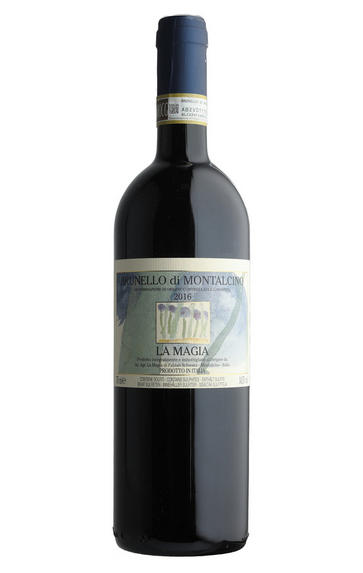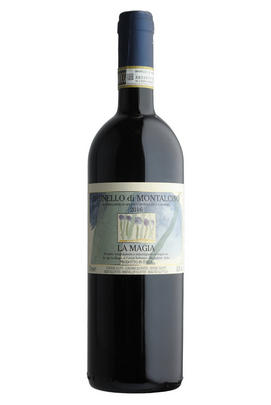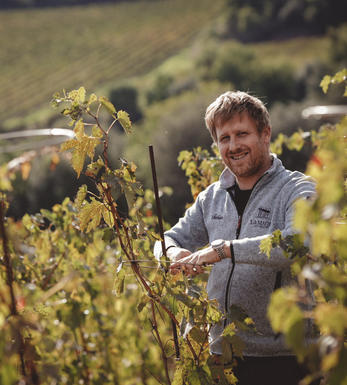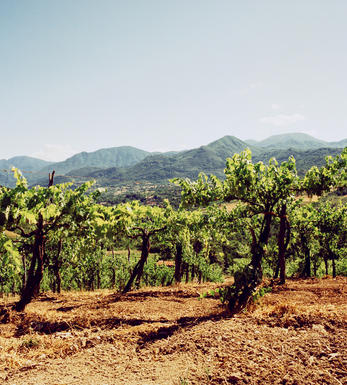
2016 Brunello di Montalcino, La Magia, Tuscany, Italy

Critics reviews
James Suckling, jamessuckling.com (November 2020)
Eric Guido, vinous.com (November 2020)
About this WINE

La Màgia
The Schwarz family have owned La Màgia since the mid-1970s. Originally from Alto Adige, they were among the first Brunello producers to estate-bottle their wines. This organic estate is farmed by second-generation Fabian; born in Montalcino, he succeeded his father in 2005. He has since redefined the estate’s direction, continuing to realise the potential of this hallowed site.
The farm sits high above the Abbey of Sant’Animo – a UNESCO World Heritage Site – and faces south-east towards Mount Amiata. The exposure to the cold mountain winds, morning sun exposition and altitude of 400-450 metres provide a cooler microclimate, adding to the freshness, tension and energy in the wines – even in a warm vintage like ’17.

Brunello di Montalcino
Along with Chianti, Brunello di Montalcino is Tuscany's most famous DOCG and the region's boldest expression of Sangiovese. Located 30 miles south of Siena with the hilltop town of Montalcino as its epicentre, its 2,000 hectares of vines are naturally delimited by the Orcia, Asso and Ombrone valleys. Brunello is the local name for the Sangiovese Grosso clone from which Brunello di Montalcino should be made in purezza (ie 100 percent).
The Brunello di Montalcino DOCG has a whale-like shape: at its head, at 661 metres above sea level on ancient, stony galestro soils facing east and southeast lies the town of Montalcino, where the DOC was founded. As you follow the spine south towards the tail, the vineyards lose altitude – those around Colle Sant'Angelo are at 250 metres – while the soils become richer with iron and clay. Further east, in the shadow of the 1,734 metre Mont'Amiata lies the village of Castelnuovo dell'Abate where the vineyards are strewn with a rich mix of galestro, granitic, volcanic, clay and schist soil types.
Historically, the zone is one of Tuscany's youngest. First praised in 1550 by Leandro Alberti for the quality of its wines, it was Tenuta Il Greppo who bottled the inaugural Brunello di Montalcino in 1888. By 1929, the region had 925 hectares of vines and 1,243 hectares of mixed crops, while in 1932 it was decreed that only those wines made and bottled within the commune could be labelled as Brunello di Montalcino. Since then, the number of producers has risen from 11 in 1960 to 230 in 2006, while over the same period the vineyards have expanded from 1,000 hectares to 12,000. The region earned its DOC in 1966, and was upgraded to DOCG in 1980.
Brunello di Montalcino cannot be released for sale until five years after the harvest, or six years in the case of Brunello di Montalcino Riserva. During this time the wines should be aged for at least two years in oak, followed by at least four months in bottle (six months for Riservas); maximum yields are 55 hl/ha.
Rosso di Montalcino is declassified Brunello di Montalcino, released for sale 18 months after the harvest.
Recommended producers: Costanti, Fuligni, Lisini, San Giuseppe, Soldera, Cerbaiona

Sangiovese
A black grape widely grown in Central Italy and the main component of Chianti and Vino Nobile di Montepulciano as well as being the sole permitted grape for the famed Brunello di Montalcino.
It is a high yielding, late ripening grape that performs best on well-drained calcareous soils on south-facing hillsides. For years it was blighted by poor clonal selection and massive overcropping - however since the 1980s the quality of Sangiovese-based wines has rocketed upwards and they are now some of the most sought after in the world.
It produces wines with pronounced tannins and acidity, though not always with great depth of colour, and its character can vary from farmyard/leather nuances through to essence of red cherries and plums. In the 1960s the advent of Super Tuscans saw bottlings of 100% Sangiovese wines, as well as the introduction of Sangiovese/Cabernet Sauvignon blends, the most famous being Tignanello.


Buying options
Add to wishlist
Description
Old vines, rocky soils and altitude – and outstanding vintage conditions – mean this release reaches new heights. Slow fermentation and long maceration, followed by 36 months in mixed barrels, provide fine detail of the estate’s terroir and careful winemaking. It’s high toned, pricked with roses, perfumed, succulent and full. There’s ferrous minerality, vibrant grace and gleaming, gripping tannins. Drink 2023-2043.
wine at a glance
Delivery and quality guarantee